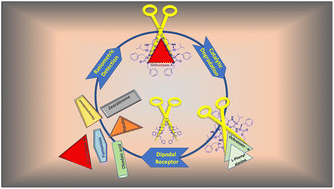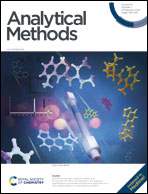Solvent directed morphogenesis of a peptidic-benzimidazolium dipodal receptor: ratiometric detection and catalytic degradation of ochratoxin A†
Abstract
Ochratoxin A (OTA) is the most abundant and harmful toxin found in agriculture and processed food. The environment and human health are both harmed by this mycotoxin. As a result, in various scenarios, selective detection and biodegradation of ochratoxin A are essential. The current study reveals the morphogenesis of a peptidic-benzimidazolium dipodal receptor (SS4) and its application as a catalytic and sensing unit for the detection and degradation of OTA in an aqueous medium. Initially, a facile and scalable method was executed to synthesize SS4, and solvent-directed morphogenesis were examined under SEM analysis. Consequently, molecular recognition properties of self-assembled architectures were explored using UV-visible absorption, fluorescence spectroscopy, and atomic force microscopy (AFM). The designed probe showed a ratiometric response for OTA and served as a catalytic unit for the degradation of OTA at a short interval of 25 min. The biodegradation pathway for OTA was accomplished using LC-MS analysis. Furthermore, the reliability of the developed method was checked by determining the spiked concentrations of the OTA in cereals and wine samples. The results obtained are in good agreement with the % recovery and RSD values. The present work provides a robust, selective, and sensitive method of detection and degradation for OTA.



 Please wait while we load your content...
Please wait while we load your content...